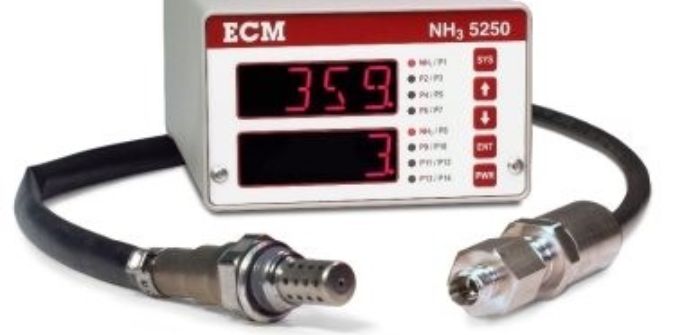UK-based test and measurement specialist Labcell has introduced the compact ECM 5250 NH3 (ammonia) analyser for use in automotive dynamometers and in-vehicle development and testing of diesel and lean-burn engine SCR (selective catalytic reduction) systems.
The unit features a large, clear display showing measured values, and the back of the instrument includes CAN, USB and RS232 ports, plus six analog outputs. Labcell is also launching the environmentally sealed NH3CAN module for in-vehicle applications where the requirement is simply for a CAN output. These instruments can play a crucial role in projects to improve engine efficiency and/or emissions.
Both instruments utilize a solid-state ceramic sensor that is mounted in the exhaust, controlled by either the 5250 analyser or NH3CAN module. These can be connected to a dynamometer data acquisition and control system, or, for in-vehicle applications, many operators will use the CAN signal output directly with an existing software platform, data acquisition system and/or laptop computer. Indeed, the CAN output enables the instruments to be used in the loop of a real-time emissions control strategy where urea is being injected to control ammonia levels. While the 5250 analyser can operate in either single-channel or dual-channel mode, the NH3CAN module is a single-channel device.
Because the sensor in fitted in the exhaust, there is no need for sample lines or pumps, which makes installation straightforward. Furthermore, the sensor can be located up to 100m from the analyzer with no loss of response time (less than one second) or accuracy (+/-5ppm). Calibration (zero and span) can be carried out by the user, with the calibration data stored on a memory chip on the sensor’s connector. If required, a pressure compensation kit can be added to improve accuracy when operating under pressure.


